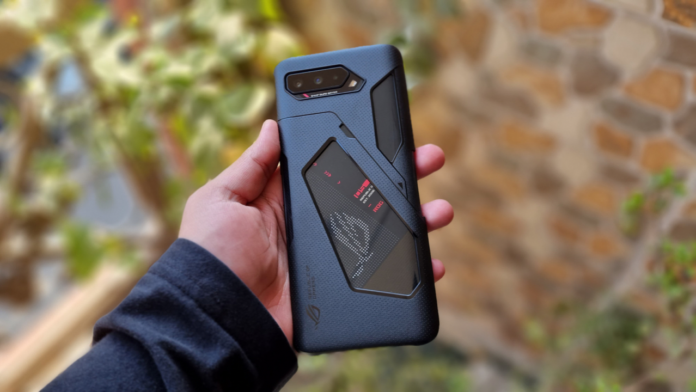Asus’ ROG devices have been in the gaming space for years and the brand is coming out with yet another smartphone with gaming in mind, and it’s called the ROG Phone 5s which has been launched for Rs 49,999 for the base model with 8GB of RAM and 128GB storage. The 12GB RAM and 256GB storage variant is priced at Rs 57,999.
The ROG Phone 5s succeeds the ROG Phone 5 from last year with minor upgrades in the Processor and display departments. So here is the review of the ROG Phone 5s in a total of 10 points which we think constitute the overall experience of using a gaming smartphone:
Design
The design of a gaming smartphone plays a major role as it should look sporty, filled with tech, etc when a gamer is holding it. In this case, the ROG Phone 5s doesn’t fail at looking like a proper handheld gaming device. The phone is thick and heavy and has all types of elements that a gamer looks for. The back of the device has the ROG branding along with the year in which it was established. The rear panel has a patterned and dotted look which also adds to the gaming vibe. However, I did find it difficult to carry such a heavy smartphone in daily use but that depends on personal preference.
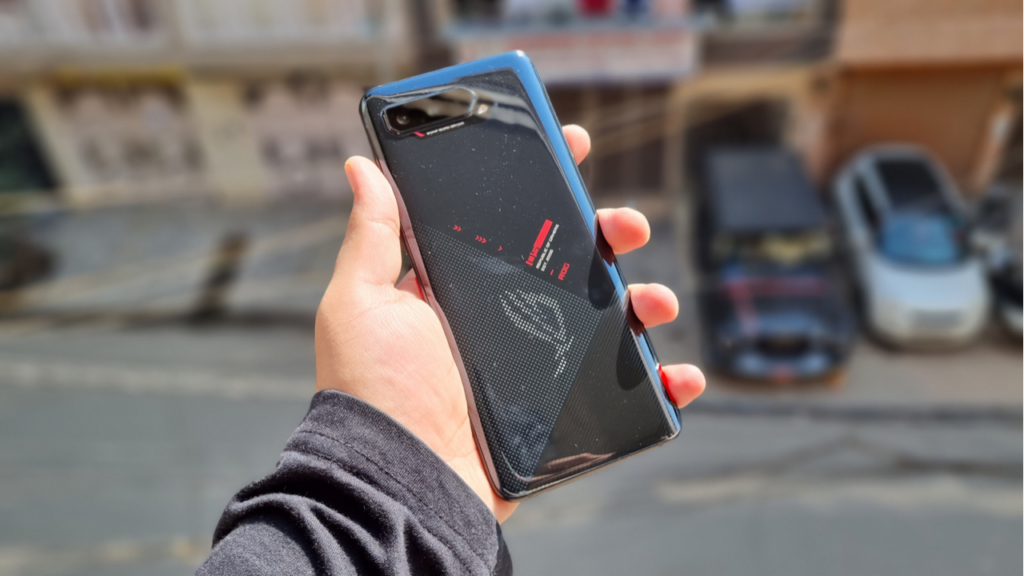
Then there’s the ROG logo which actually lights up for various scenarios about which I’ll talk later. On the Pro model, this is replaced by a small display which can also show custom text. Further, you get a case inside the box that has all sorts of cutouts to show off this design while protecting your phone at the same time.
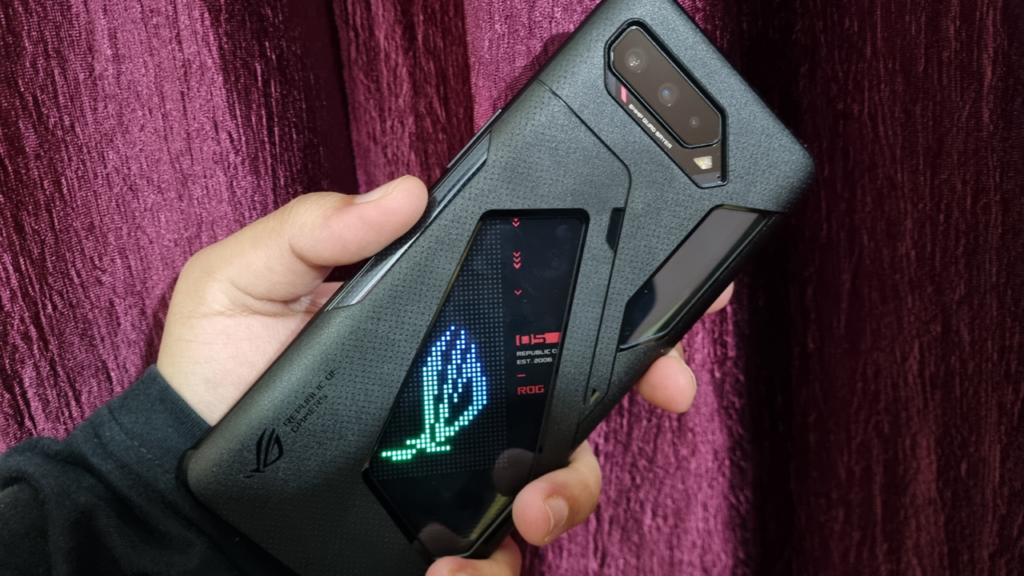
There’s a USB-C port at the bottom along with a 3.5mm Headphone jack. Further, the power button and the volume rocker reside on the right spine along with a mic which helps in better voice reception when you are holding the phone in landscape and are also voice chatting with friends. The buttons however were a bit fiddly and wobbly. This wasn’t the case with the ROG Phone 5 which also had an identical design.
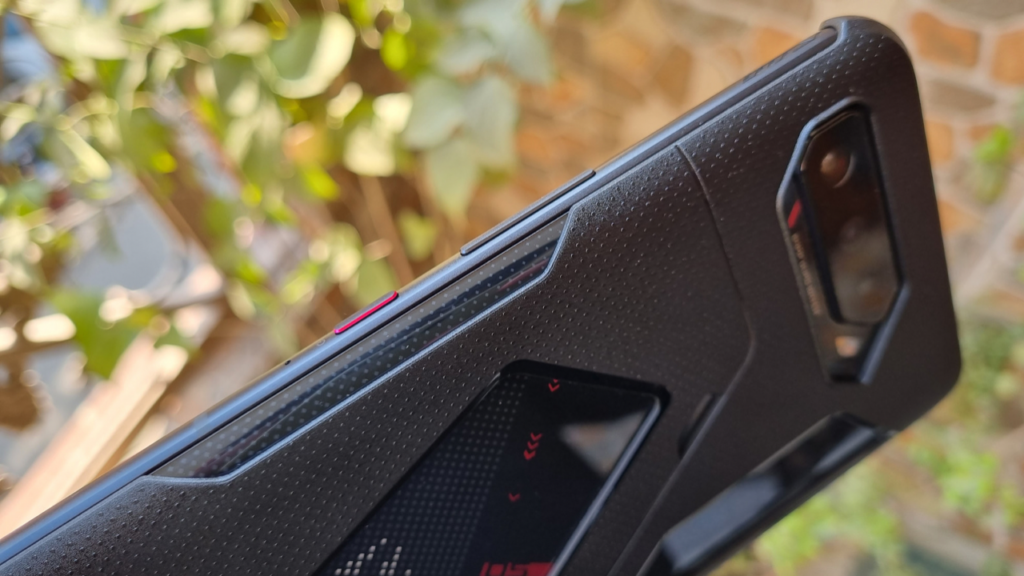
Also on the right spine reside the Air Triggers. There are two of them on each EDGE that can be mapped to various actions while in-game or while using the phone on a daily basis. Then there’s a mic up top, at the back below the cameras and one below as well. And then there’s another Type-C port at the left which can be used for charging while you game so the cable doesn’t interfere with your hands as when you hold the phone in landscape, the left type-c port goes at the bottom.
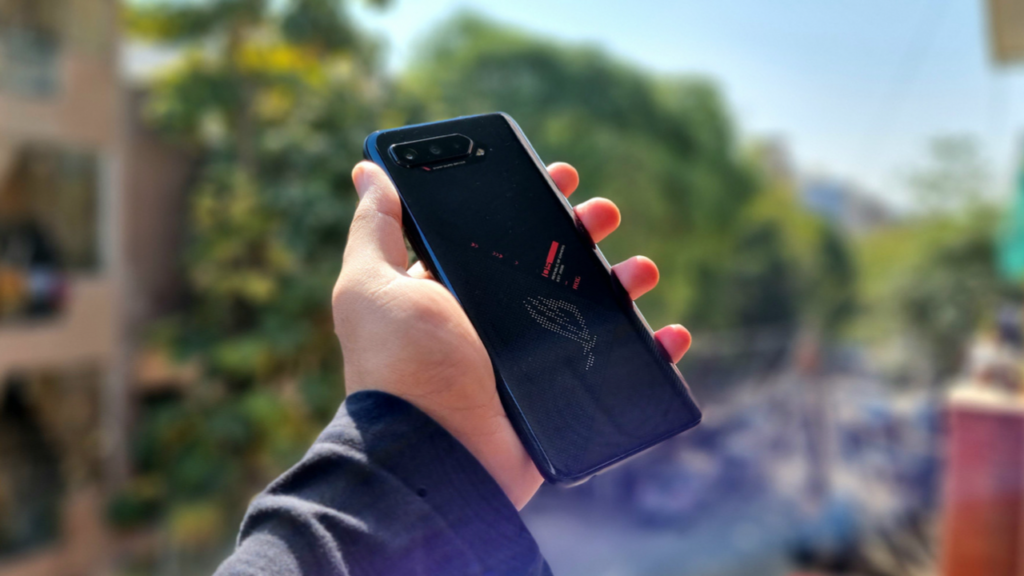
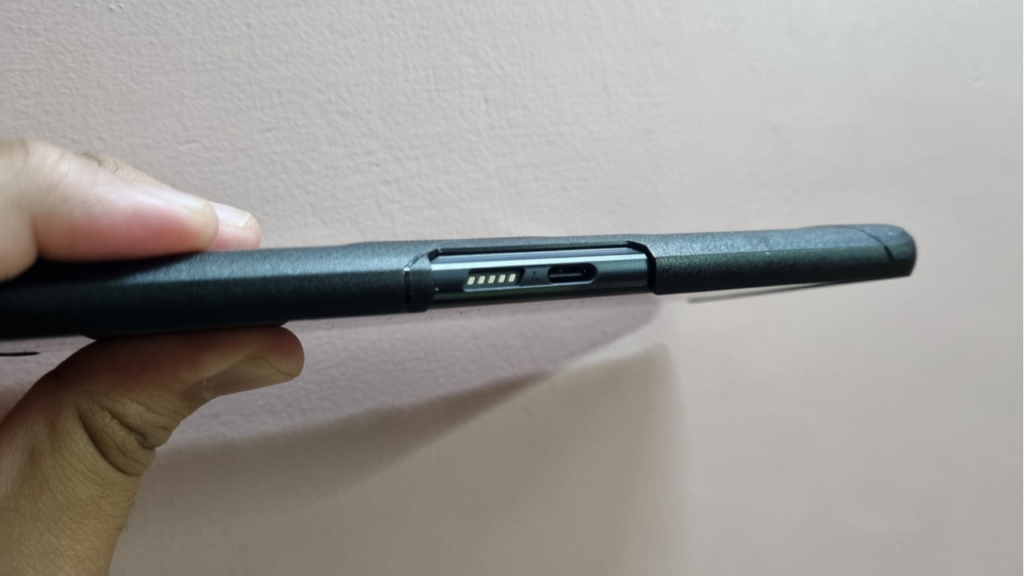
For some reason while setting up the phone, Asus tells you to use the side port for charging but even the bottom one charged the phone just fine. Along with the left charging port, you also get the PIN connectors which can be used to connect additional accessories such as the cooling fan, or the remote controller. Finally, there are small details to which Asus has paid attention, such as the red coloured SIM tray and a red tint on the power button.
Display
The display on a gaming phone plays a major role in enhancing the overall experience and the ROG Phone 5s does that for the most part. It sports a 6.78 inches full-HD+ Samsung AMOLED E4 screen with 1080 x 2448 pixels resolution. There’s an aspect ratio of 20.4:9, 144Hz refresh rate, 360Hz touch-sampling rate, 1ms response rate, Gorilla Glass Victus protection and HDR10+.
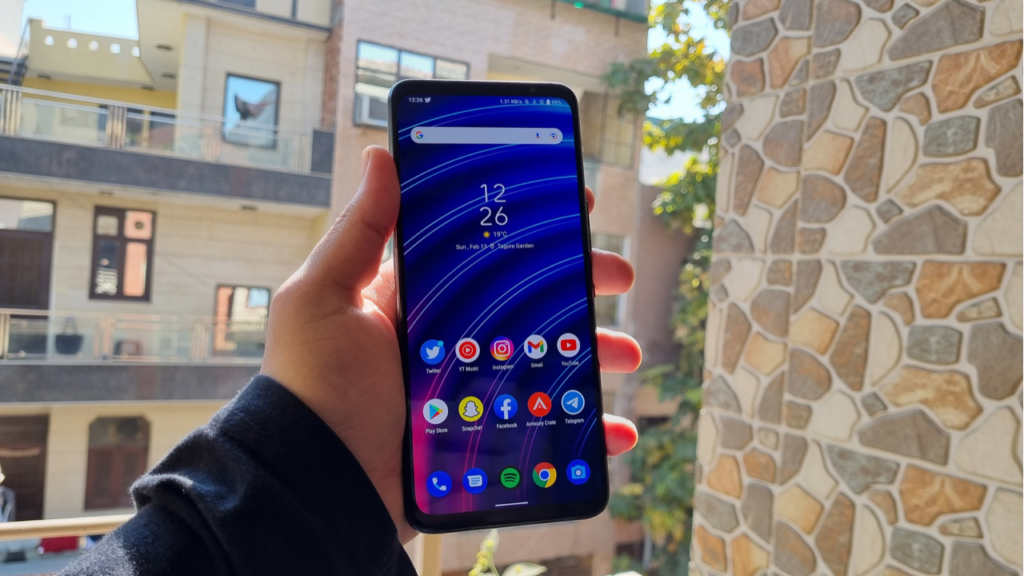
The 144Hz panel feels very smooth in daily usage and even while gaming. The high touch sampling rate makes a big difference while playing games. The colours were also pretty accurate and punchy. However, the brightness of the display is average for a flagship phone. It gets bright enough, but not as bright as other smartphones in this segment.
Moreover, I could notice a rainbow effect from certain angles which I hadn’t expected. Above the display, there’s also a small notification light which is a nice addition. The in-display optical fingerprint sensor is accurate and fast enough to unlock the smartphone, however, its position is a little higher up and a slightly lower positioning would have been better because its such a big display.
Read More: Asus ROG Phone 5 Review: Is it going beyond gaming?
Performance
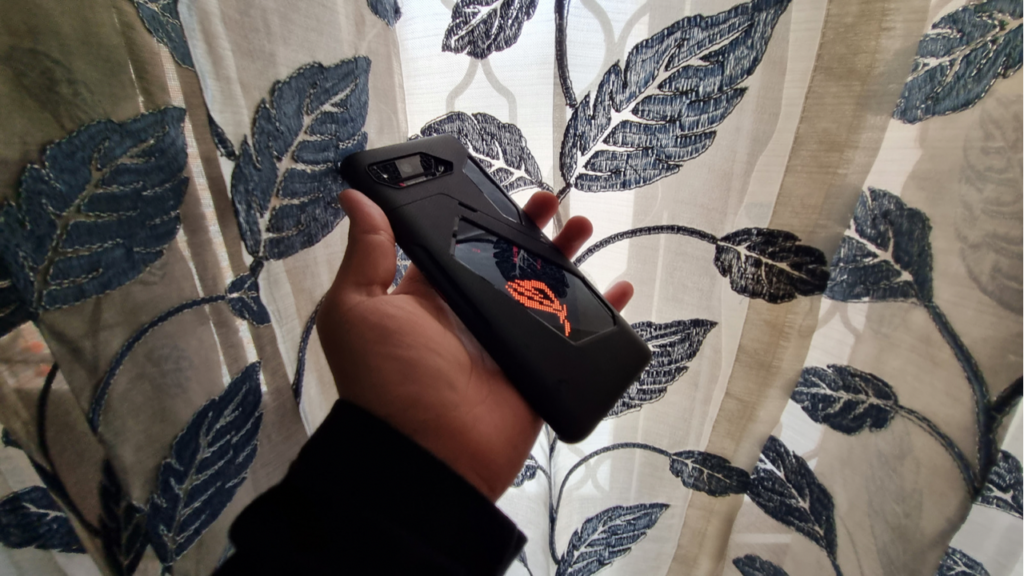
At a price point like this, you’d expect the performance of the phone to be smooth and snappy and the ROG Phone 5s does it without any hiccups. It is powered by the Snapdragon 888+ SoC which is a slightly faster processor than the Snapdragon 888 on the ROG Phone 5. However, you won’t notice any difference in daily usage as both the phones are super snappy. ROG Phone 5s doesn’t struggle to perform any type of tasks you throw at it. RAM management on our 8GB + 128GB variant was also impressive.
Software & Features
The ROG Phone 5s runs on Android 11 and Asus has kept it close to stock Android. While we appreciate this move, we do not like how Asus is handling the updates. The unit we got was still stuck on the September 2021 security patch and the phone was up to date whenever we checked for updates. Further, most of the major OEMs have started updating their devices to Android 12. On the other hand, Asus hasn’t even updated its last year’s ROG Phone 5 series to Android 12. Both the 5 and 5s series are slated to receive them before March ends, which is very late considering this is a flagship.
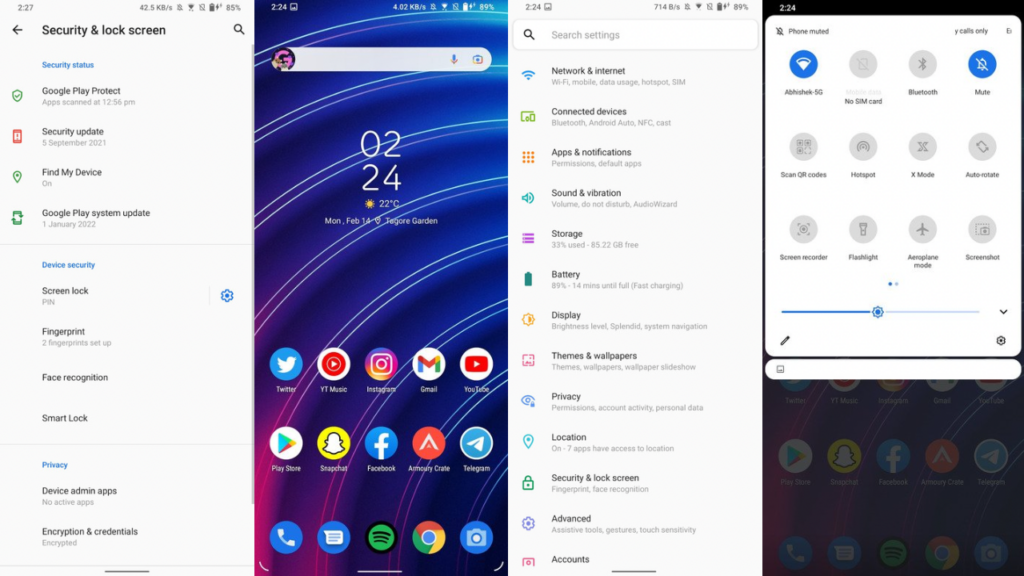
As for the features, you get a bunch of them along with a stock-ish UI. These features include Twin apps where you can clone an app, say WhatsApp, and use it with two phone numbers on the same phone. Then there’s OptiFlex which can accelerate App launches, reduce app reloads and also save power on standby. Then there are a bunch of gestures both with the screen off and on.
There’s a feature using which you can map the AirTrigger to use it as a squeeze to trigger functionality. You can map a short squeeze to open Google Assistant or some other app or feature. You can do the same for a long squeeze. Moreover, you can even set the squeeze force level so the phone can determine how much force of your squeeze it should trigger the feature or open the app of your choice. These are only a few features about which we talked while there are a bunch of others that can be explored.
Gaming
Coming to gaming, the USP of the smartphone, is again handled very well by the ROG Phone 5s. There were no lags and I was getting a constant 60 FPS with Call of Duty Mobile, PUBG, and RL Sideswipe. However, the phone did get heated up despite the cooling measures implemented by Asus which I didn’t expect. It wasn’t uncomfortable but was hot to the touch.
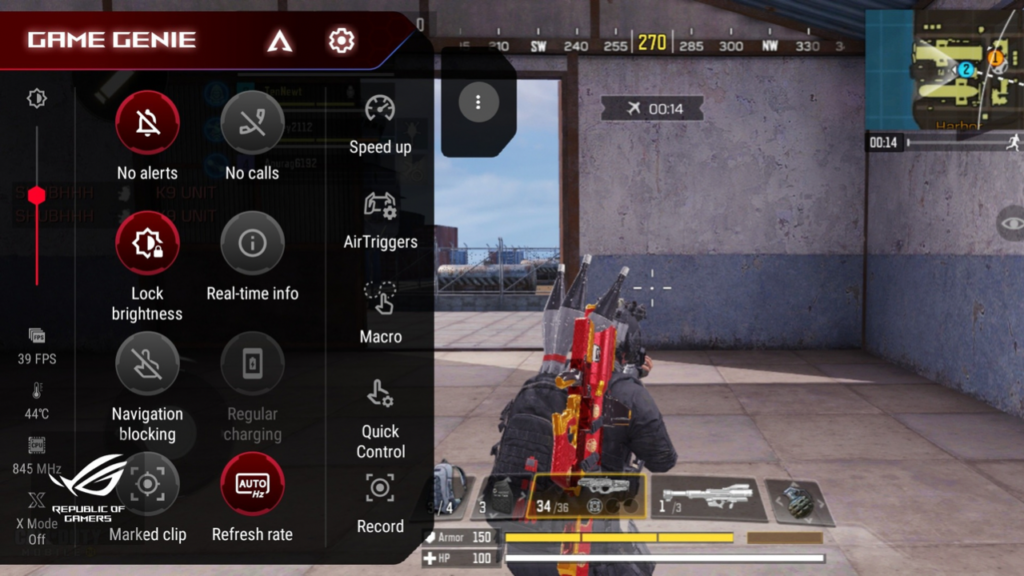
The Air Triggers were very responsive to the touch during my use with Call of Duty Mobile. You can customize their position as to what action you want to trigger when you touch the trigger. Further, there’s slide functionality present as well where you can slide on the trigger to execute the desired action.
Next, you have Game Genie, which is the panel where all the key gaming features reside. You can activate the Game Genie in the game by swiping from the top left while in the landscape. It further has gaming-centric features such as crosshair, Refresh Rate selection, navigation blocking, scout mode, etc. It also shows you the current temperature of the phone and what frames per second are you getting.
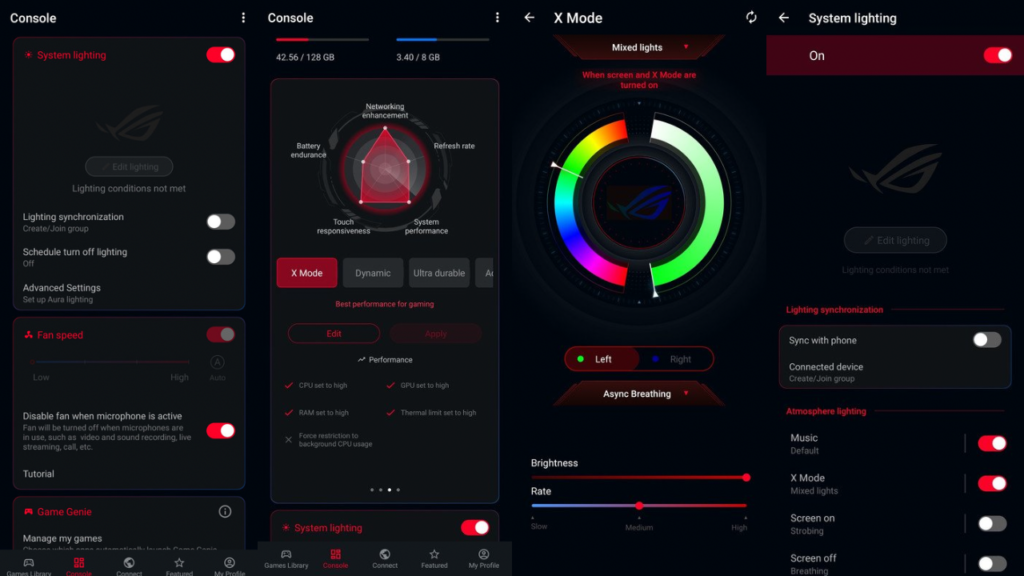
Then comes the console which is the feature that controls the lighting, fan speed, what mode you are in, and other features. X-mode, which is built for gaming, can automatically trigger a certain set of actions such as activation of Dual-Band wi-fi, auto-refresh rate selection, touch sensitivity, etc. It is basically built to remove any kind of hindrances that one might face while gaming which may include network problems, touch responsiveness, and more.
At the beginning of the review, we talked about the glowing logo. That can be controlled with the console where you can set up Aura lighting. With this feature, you can set the logo to turn on whenever a notification arrives, or change its colour while charging so you know what percentage your phone is on. You can also set it to turn on and get synced with the music you play on your phone. Moreover, you can change the effect of the light, its breathing rate, brightness and even the colour using the given colour palette.
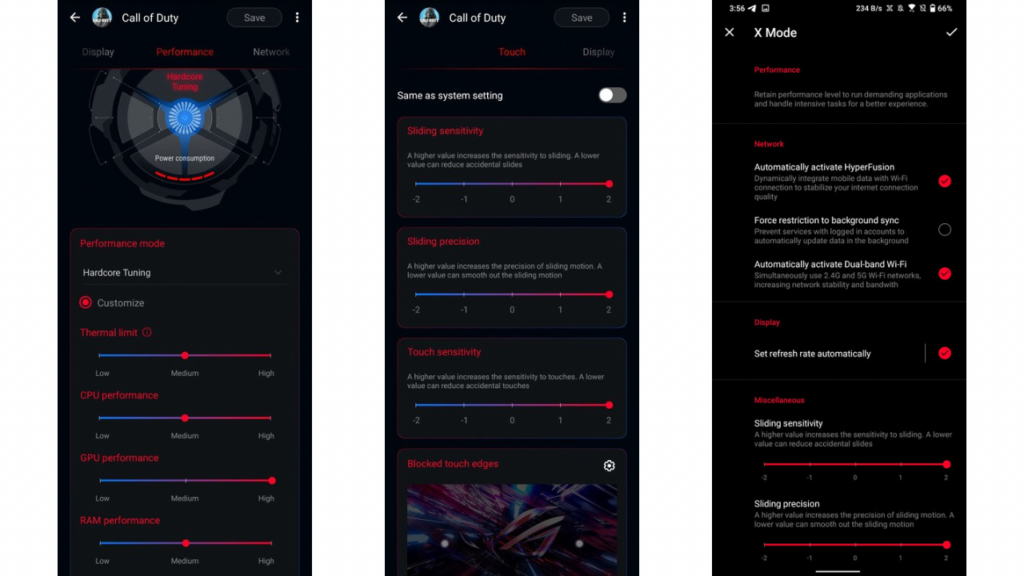
Finally, I want to talk about the Scenario Profiles where you can save a profile on a per-game basis. Using this feature, you can customize how your hardware performs while you play your game. You can set thermal limit, CPU, GPU and RAM performance. Along with that, you get the ability to set various aspects of touch responsiveness, as well as Display aspects including anti-aliasing, Anisotropic filtering, Texture filtering and detail. These settings will be applied automatically every time you launch the game of your choice and will change accordingly.
Battery Life
The Asus ROG Phone 5s is backed by a 6000mAh battery, same as ROG Phone 5 and also supports the same fast-charging up to 65W. However, you get a 30W charger in the box which is a bummer. Asus should be shipping a 65W charger at this price but there seems to be some cost-cutting going on here. However, the battery life on the ROG Phone 5s lasted a decent amount of time.
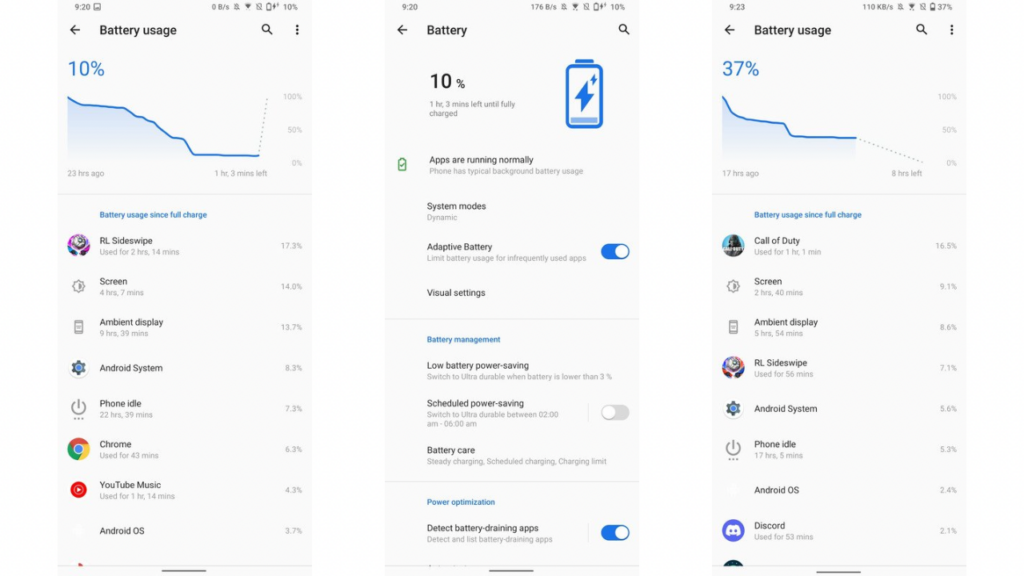
With the refresh rate at auto, I was able to get 6 hours of screen-on time with heavy usage including browsing, calls, light gaming, watching videos, etc. With heavy gaming, the phone gave me a screen-on time of about 4 hours with a total of 15 hours of usage, before it dropped to 10%. However, I gamed with the max settings applied in hardware tuning under Scenario Profiles. With very light usage, the device can easily last more than a day, or maybe even two.
Talking about battery life, I also want to mention what features Asus has given to maximise battery health. In battery settings, you can limit the percentage till which the battery charges so you don’t charge it to 100% every time, as it degrades battery life quicker, Then, there’s also an option to bypass charging while gaming so that the charger only feeds power to the system without charging the phone, to prevent it from switching off. This also reduces heating if you are gaming while plugged in. There are also scheduled power saving, steady charging, scheduled charging features available.
Haptics
Haptics handle that part of the phone where you feel whatever action is happening on the screen. Asus has equipped the device with a great haptic motor as you really feel the tactile response with every action that triggers the vibration. It’s strong and each vibration is tight and very accurate. While gaming, there’s a haptic audio feature that works with only supported games. With this feature implemented in games such as Call of Duty Mobile, the phone will vibrate in sync with the shooting of the gun. This really elevates the overall experience, however, it doesn’t work when you are connected with a Bluetooth headset as the feature doesn’t support that yet.
Audio
The audio on the Asus ROG Phone 5s comes out of two symmetrical speakers that are placed on the top and the bottom. These are front-firing 7-magnet speakers made for balanced stereo sound. The phone is further equipped with a 3.5mm headphone jack and Hi-Fi grade ESS DAC, tuned by Dirac. As good as they look on paper, they sound even better.
The sound is very full, with a good amount of bass and treble. It is very balanced, however, when using the outdoor mode, the sound does distort slightly. Apart from that, you can hear every beat along with the bass vibrations. They are positioned in such a way so you don’t block them with your hands in landscape position. Even while gaming, I could clearly hear the footsteps of my enemy and could figure out if he was coming from the right or the left.
To tune the audio, you get an AudioWizard by Dirac where you can customize the equaliser as per your choice and select sound profiles on the basis of scenario including Music, Cinema, Game and Dynamic.
Benchmarks
With benchmarks, you can expect anything that you’d get with a high-end phone. In the multi-core test, it scored 3593 points while it scored 1113 in the single-core test. To compare, the Galaxy S21 Ultra has a multi-core score of 3085 and a single-core score of 924. While benchmarks may not depict real-world usage, it does tell you where the phone stands in terms of numbers, and the ROG Phone 5s is nothing short of a flagship in this case as well.
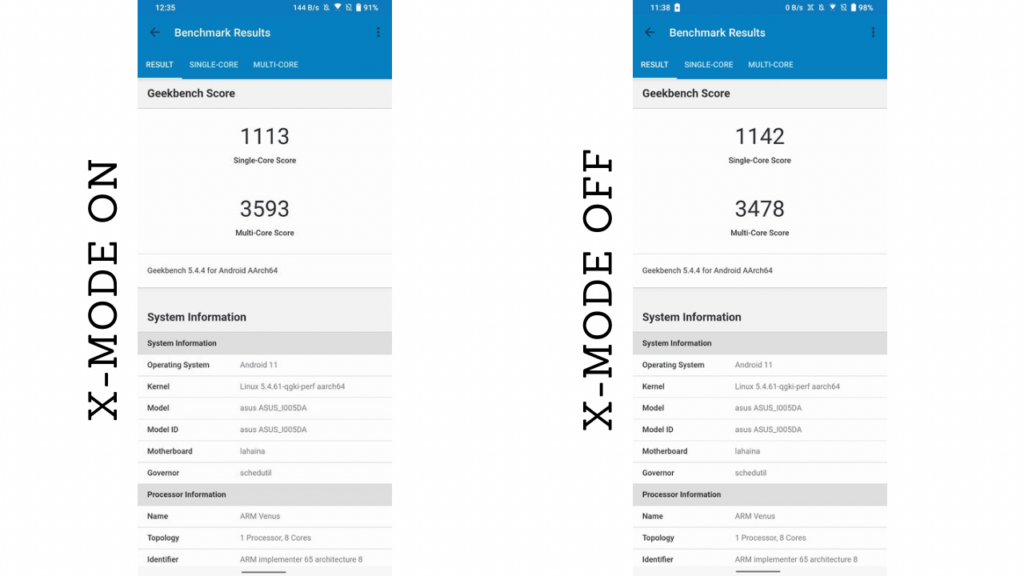
However, I did notice something unusual where every time I opened the Geekbench app, X-Mode was getting enabled by default. Asus says that when the X Mode is turned on, it improves hardware efficiency and removes background apps to release memory, in order to optimize the gaming experience. This did improve the multi-core scores by a bit but the single-core score took a slight hit for some reason. This did look suspicious considering Asus may be trying to improve the Benchmarking scores using this mode.
Cameras
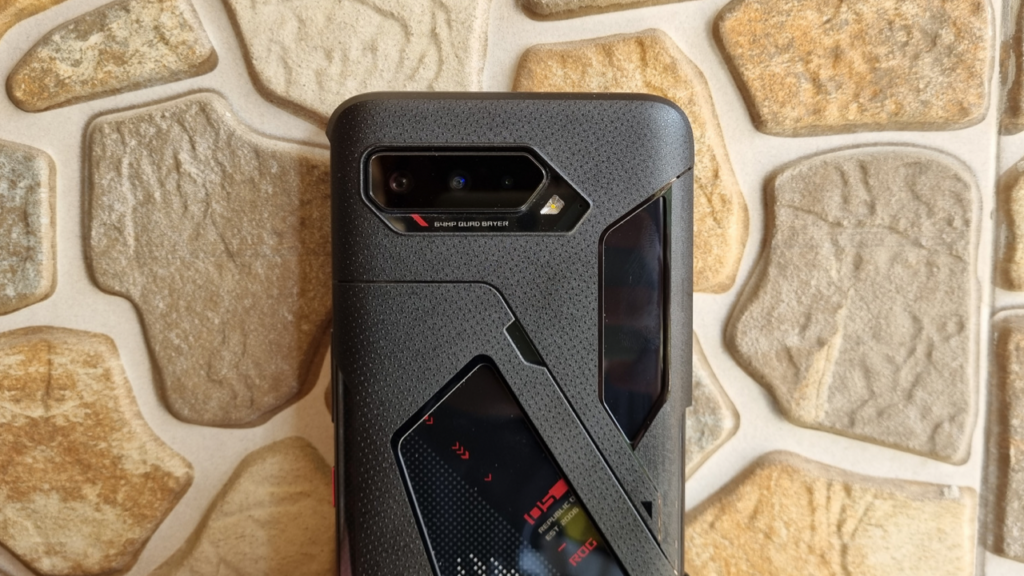
The last section that remains to be discussed is about the cameras that were not very impressive on the ROG Phone 5. With the ROG Phone 5s as well, you get the same triple rear camera setup as ROG Phone 5, comprising a 64-megapixel primary sensor, a 13-megapixel ultra-wide lens, and a 5-megapixel macro camera. Further on the front, there is a 24-megapixel selfie snapper.
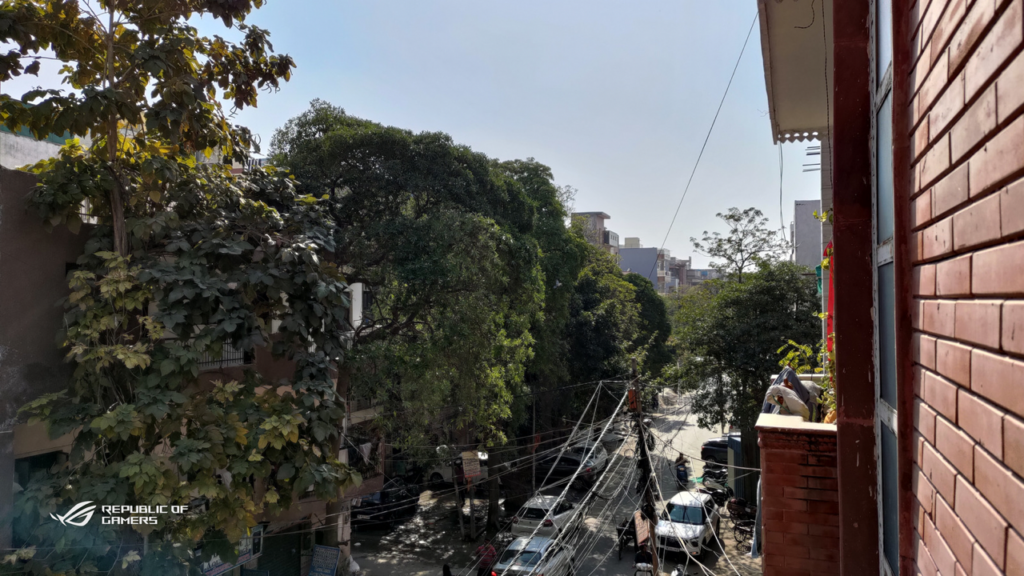
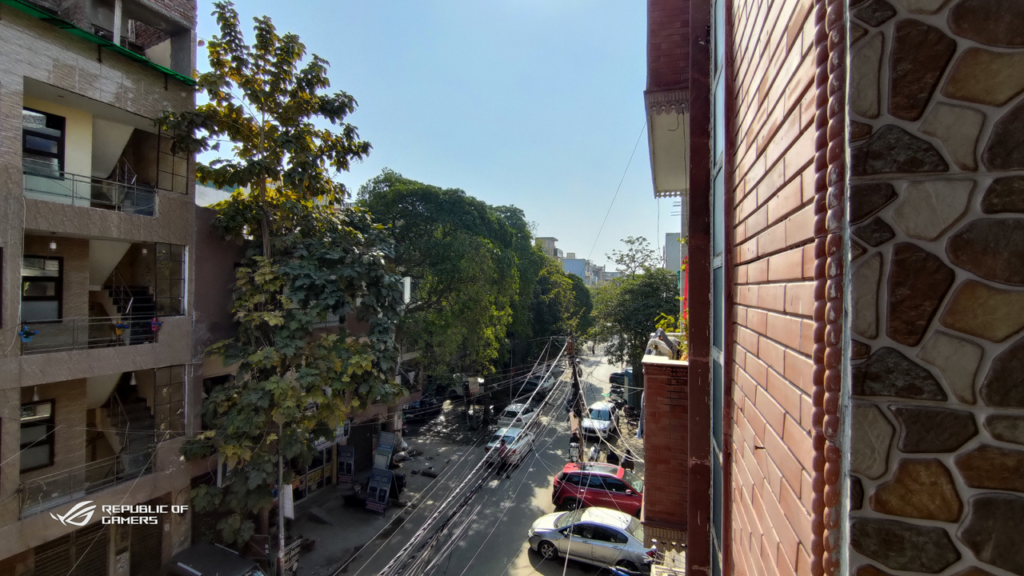
The dynamic range in photos from the primary sensor was decent, however, the HDR was a bit overdone. The colours were very natural when you take a glance however, when you zoom in, you can notice that there’s some noise in the photo and it gets blurry as well. The detailing is fine but could have been better. With Wide-Angle shots, the photos were very identical to the main sensor, except the colours that were slightly shifted.
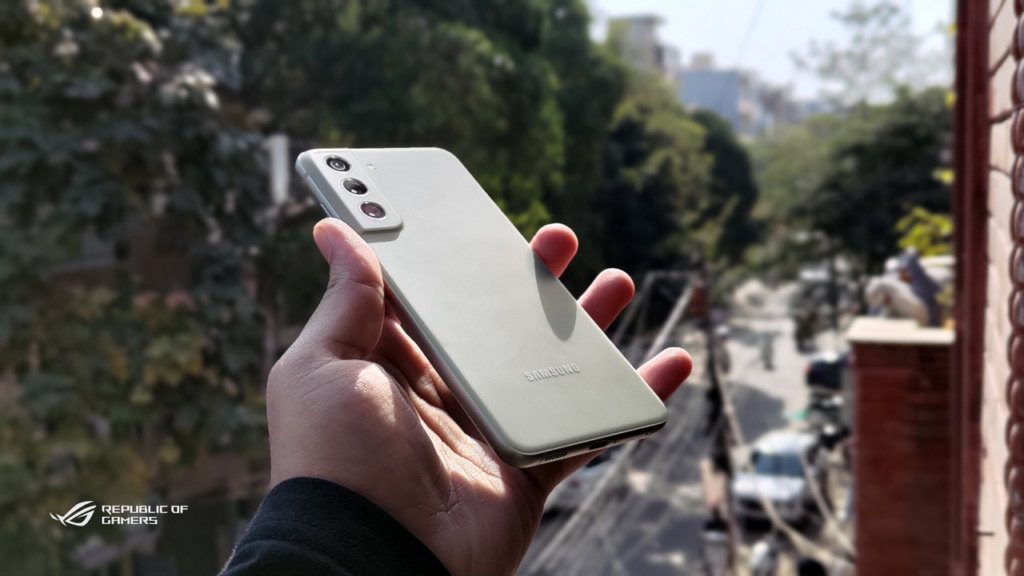
The portrait photos were also natural with colours but a bit faded. There was accurate edge detection with a good amount of blur in the background. The detailing was decent as well. For macro photos, the details which are vital in such shots were present but the colours were again very different from what they looked like in real life. Moreover, I also faced issues while focusing on the subject in macro photos.

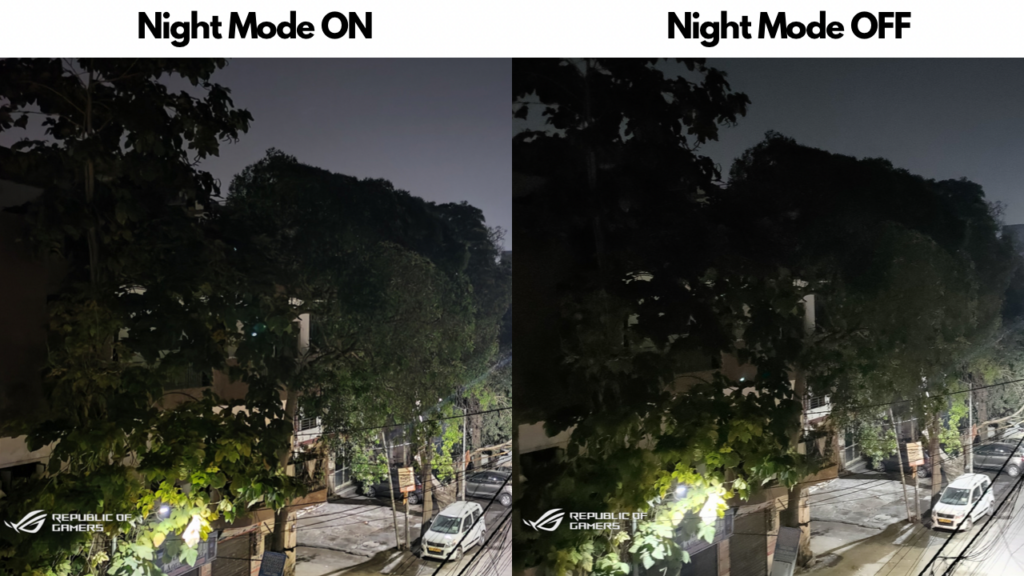
Under night conditions, photos without Night mode ON were blurry and had little details. However, with night mode ON, the details and brightness were considerably improved and the results were surprising. When clicking photos under artificial lighting, the colours were very oversaturated and the contrast was too high. It totally changed the colours of the photo, such as the green of the bottle below, which is light green in real life, but looks totally different in the photo.
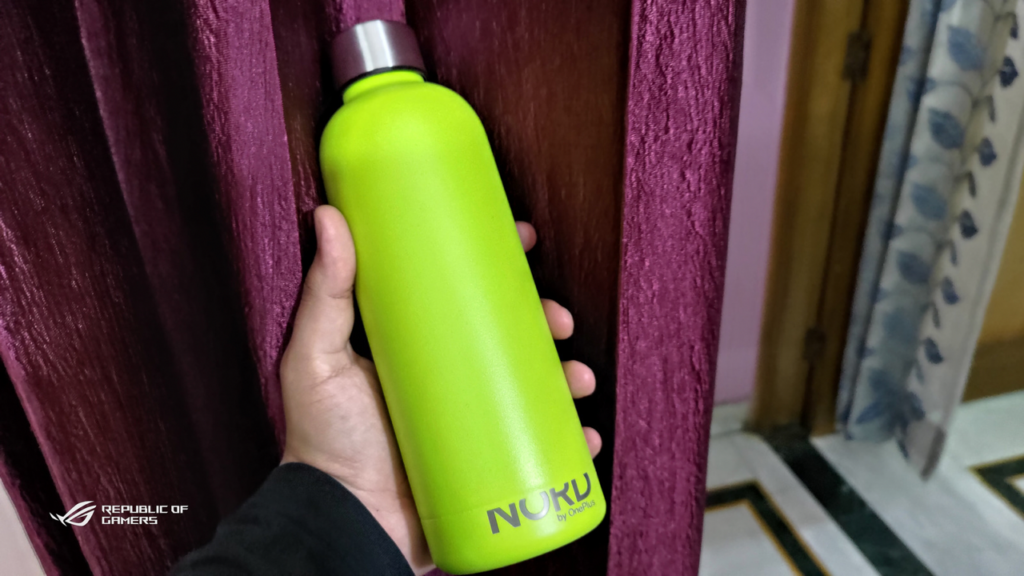

Under low-lighting, things looked a bit sketchy. While these photos had average colours, the details were missing and the software was struggling to implement proper edge detection around the subject. Lastly, the selfies were average again, with good colour reproduction but a slight smudge effect, and little detailing. The background also looked very smudgy.


